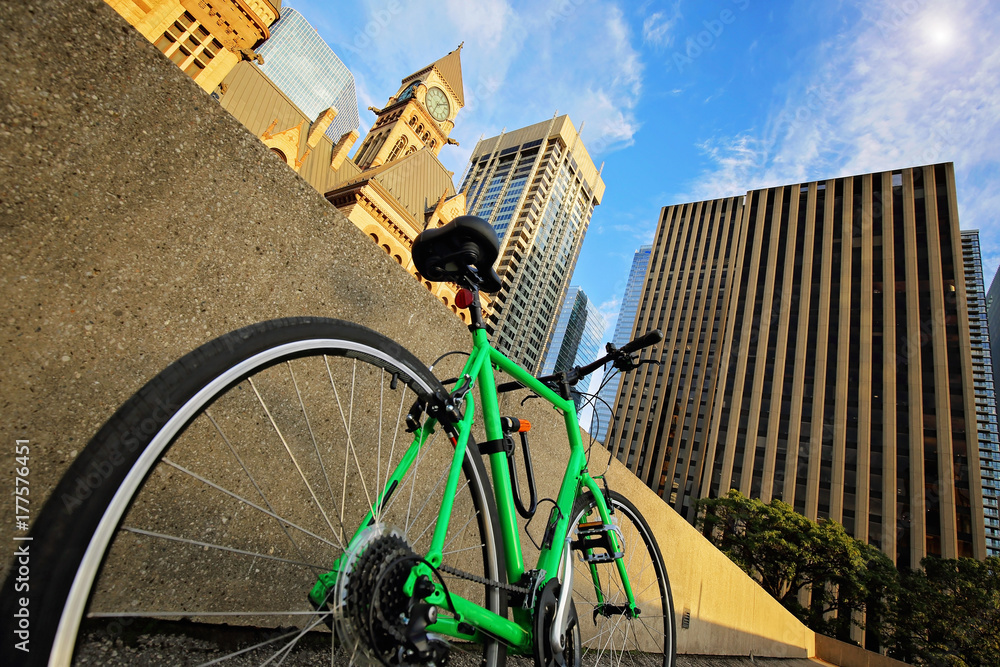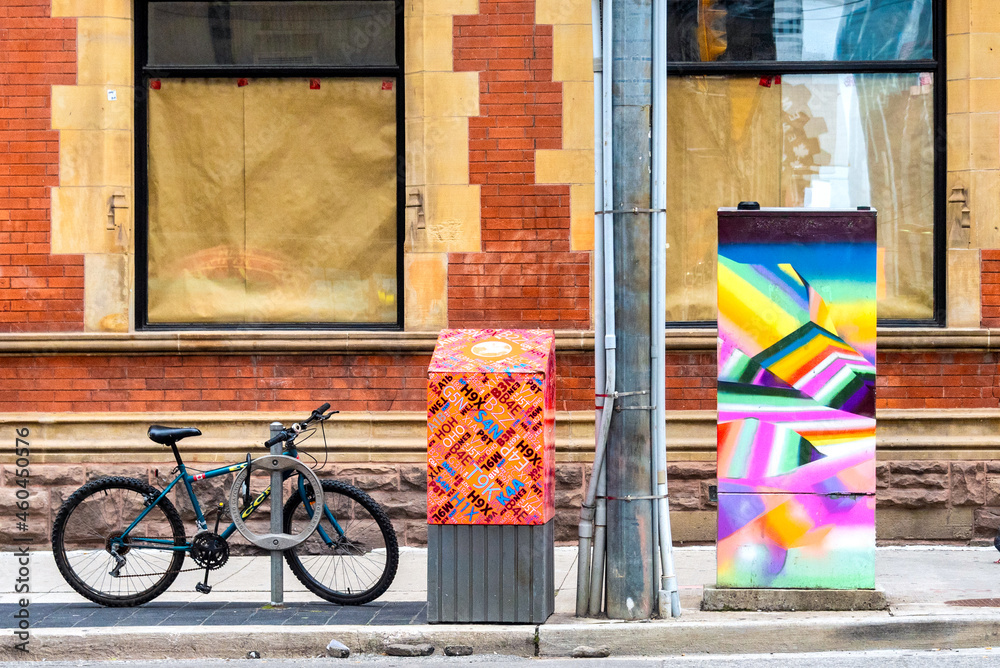Toronto’s bustling streets are teeming with cyclists. It’s a fantastic way to get around, enjoying the fresh air and exercise while navigating the city. As per recent data, 16% of Canadians cycle at least once every week. But with so much activity, staying safe becomes paramount. (1)
This is important because Toronto’s cycling fatality numbers are alarming; in 2024, four fatalities were recorded. And with summer approaching, which is typically peak cycling season, it’s likely these numbers will unfortunately climb even higher. (2)

So, whether you’re a seasoned cyclist or just starting out, brushing up on safe cycling practices can significantly reduce the risk of accidents. Here’s how:
Gear up for safety
Before you hit the road, it’s crucial to ensure you and your bike are prepped for a safe journey. The first line of defence? A properly fitted helmet. It’s not a suggestion; it’s a lifesaver. Invest in a helmet that feels comfortable and secure. And remember – every ride is helmet time.
Next, inspect your bicycle. A quick check of your brakes, tires, and lights can prevent unexpected breakdowns and potential hazards. Brakes should be responsive, tires inflated and free of cracks, and lights (front white, rear red) functional for low-light conditions.
Plan your ride, ride your plan
Take some time to plan your route. Thankfully, Toronto offers a variety of cycling routes catering to different preferences. So, if you’re a beginner, opt for quieter side streets or designated bike lanes. The City of Toronto’s Cycling Network Map is a great resource for exploring routes best suited to your comfort level.
See and be seen
While navigating the city, stay alert and aware of your surroundings. This means keeping an eye out for cars, pedestrians, and fellow cyclists. Avoid distractions like using your phone or listening to music with headphones that block out crucial traffic sounds.
Being aware of your surroundings also means being prepared for the unexpected. Unfortunately, not all drivers are aware cyclists share the road, and accidents can happen. If you’re involved in a car accident while cycling, having the contact information of a car accident lawyer in Toronto readily available can be helpful.
Sharing the road
Just like cars, cyclists have a responsibility to follow the rules of the road. Stopping at red lights and stop signs isn’t optional; it ensures everyone’s safety. Signaling your turns with hand signals is essential for clear communication with drivers. Remember, cyclists are considered vehicles, and riding in the same direction as traffic is crucial.
Be predictable
Imagine you’re a dot moving amongst a sea of cars. To avoid confusion, maintain a straight line whenever possible. Weaving in and out of traffic can be startling for drivers, so keep your movements predictable.
Staying visible is another key element of safe cycling. Opt for bright clothing during the day and at night, and ensure your bike lights are on and functional. Reflective gear adds an extra layer of visibility, especially in low-light conditions.
Defensive cycling
Let’s face it: not all drivers are aware that cyclists share the road. It’s always better to be safe than sorry. Adopt a defensive cycling approach. Assume drivers might not see you and be prepared to stop suddenly if necessary.
Communicate clearly
Hand signals are a cyclist’s way of talking to drivers. It’s a simple yet effective tool to communicate your intentions. Extending your left arm straight out indicates a left turn while bending your left arm at a 90-degree angle signifies a stop.
Additional safety tips
Here are some safety practices that are mostly applicable in Toronto:
Dooring
This is when a parked car door swings open unexpectedly into the path of a cyclist, and this happens more often than many think. In fact, dooring makes up 19.7% of all cycling incidents. Therefore, be extra cautious when riding close to parked cars, especially on streets with narrow bike lanes. (3)
Streetcar tracks
Those metal grooves can be tricky. Avoid riding directly on the tracks, and when crossing, ensure your wheels are at an angle to prevent getting caught.
Pedestrian courtesy
Remember, pedestrians always have the right of way. Yield to them at crosswalks and be patient. Sharing the road goes both ways.

Respect and courtesy
Toronto’s roads are a shared space. By treating other road users with respect and being predictable in your movements, you contribute to a safer cycling environment for everyone.
Taking safety a step further
Here are some additional tips to consider for seasoned cyclists:
Invest in a mirror
It allows you to check behind you without swerving.
Fenders
Especially important during wet weather, they keep you and your fellow cyclists mud-free.
Lights during the day
While not mandatory, they can enhance your visibility, especially in low-light conditions.
Consider cycling courses
These can equip you with advanced skills and techniques to navigate the city confidently.
By following these safe cycling practices, you can transform your rides into enjoyable journeys. Remember, safety is a shared responsibility. Cyclists, drivers, and pedestrians all play a role in creating a safe and harmonious environment on Toronto’s streets. So, gear up, plan your route, and get ready to explore the city on two wheels, one safe ride at a time!
References
- ‘Share of population who rode a bicycle at least once a week in 2022, by selected countries’, Source: https://www.statista.com/statistics/1353329/cycling-frequency-worldwide/#
- ‘Fatalities – Vision Zero’, Source: https://www.toronto.ca/services-payments/streets-parking-transportation/road-safety/vision-zero/vision-zero-dashboard/fatalities-vision-zero/
- ‘Dooring’, Source: https://en.wikipedia.org/wiki/Dooring#

